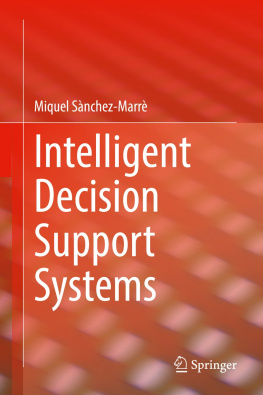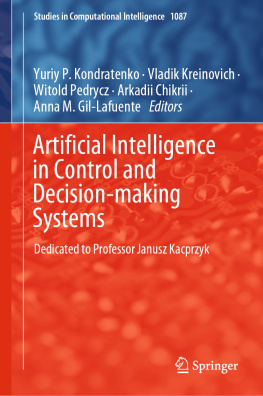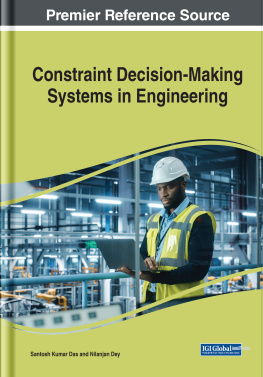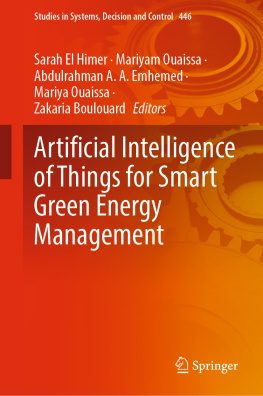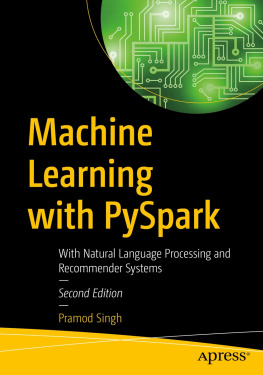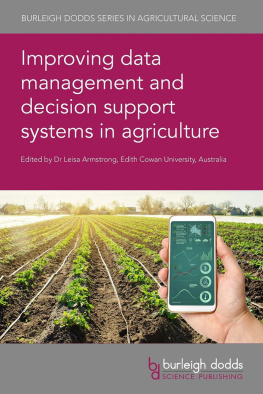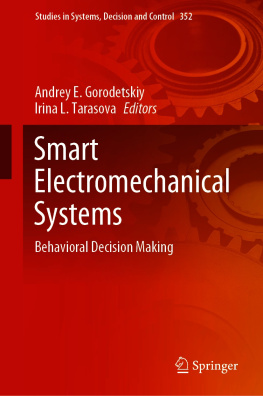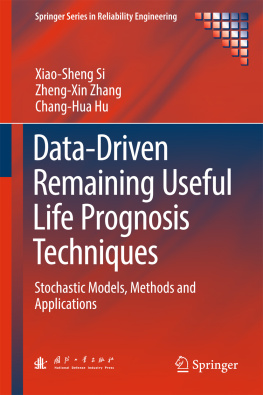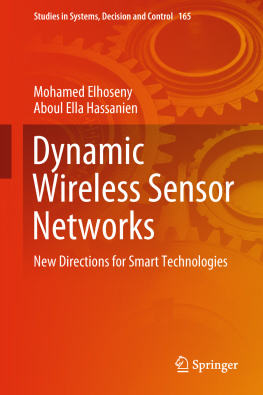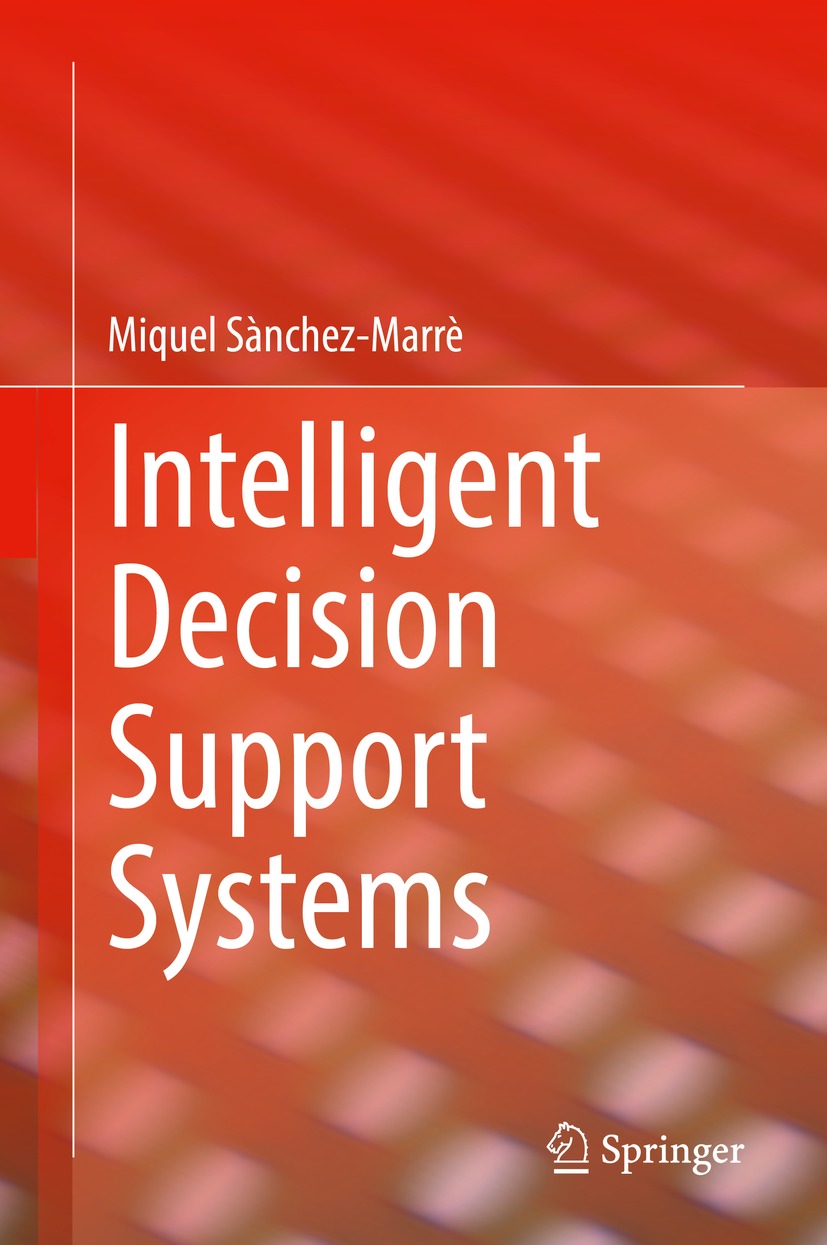Miquel Snchez-Marr
Dept. of Computer Science, Universitat Politcnica de Catalunya, Barcelona, Spain
ISBN 978-3-030-87789-7 e-ISBN 978-3-030-87790-3
https://doi.org/10.1007/978-3-030-87790-3
Springer Nature Switzerland AG 2022
This work is subject to copyright. All rights are reserved by the Publisher, whether the whole or part of the material is concerned, specifically the rights of translation, reprinting, reuse of illustrations, recitation, broadcasting, reproduction on microfilms or in any other physical way, and transmission or information storage and retrieval, electronic adaptation, computer software, or by similar or dissimilar methodology now known or hereafter developed.
The use of general descriptive names, registered names, trademarks, service marks, etc. in this publication does not imply, even in the absence of a specific statement, that such names are exempt from the relevant protective laws and regulations and therefore free for general use.
The publisher, the authors and the editors are safe to assume that the advice and information in this book are believed to be true and accurate at the date of publication. Neither the publisher nor the authors or the editors give a warranty, expressed or implied, with respect to the material contained herein or for any errors or omissions that may have been made. The publisher remains neutral with regard to jurisdictional claims in published maps and institutional affiliations.
This Springer imprint is published by the registered company Springer Nature Switzerland AG
The registered company address is: Gewerbestrasse 11, 6330 Cham, Switzerland
Foreword
Each individual makes zillions of decisions every day, most of them unconsciously, without much reasoning. How hot to turn the shower, what to wear today, what to have for breakfast, which street to take on the way to the bus stop, and many more. Most of these decisions are embedded in some routine, reasonable and effective, and if not, there is usually no big problem in recovering from wrong or suboptimal choices. Decision making becomes more difficult and critical, for instance, when it is not clear, what the options are and how they are related to our objectives, when these objectives are different for the involved stakeholders, when actions decided upon cannot be undone, when they have a serious impact on entire companies, communities, states, and even at a global scope, and when bad or wrong decisions have a drastic impact on the living conditions and lives of people. The state of the world demands for many decisions of this kind, for instance, related to economy, international politics, military conflicts, ecology, and climate change.
In the last century, increasing efforts were undertaken to improve decision making through the development of more or less formal scientific theories, mathematical and algorithmic approaches, and the development of computer tools, initially mainly related to economy- and management-related decision processes, originally under the name of Information Management Systems. How and to what extent can these mathematical and computational means provide support or even automate the derivation of good decisions? The simplest scenario is being given a set of available options and a single criterion to evaluate and compare them and select the one that meets the interest of one stakeholder best. Unfortunately, such scenarios do not exist in the real world. There are always multiple criteria and multiple stakeholders, and one might hope for algorithms and formulas that assign some (quantitative or qualitative) value to different features and combine them using some weights to capture their importance to stakeholders in order to obtain the best result for all. Unfortunately, this does not work. A formula will make any of the options the winner when parameters are picked accordingly. And there is no best method in combining the measurements of criteria under reflection of values for the stakeholders; the Paradox of multi-criteria decision analysis reported some 40 years ago provides evidence for this.
The task of balancing the numerical or qualitative assessment and importance of different characteristics according to various objectives and interests cannot be delegated to mathematical expressions and algorithms that are bare of any meaning of the subject and impact of the decision. It will remain the duty of human decision makers. There is no universal and correct way of transforming the mesh of criteria and interests existing in the real world into a mathematical expression.
But then, what can be and should be the support in decision making that can be provided by computer systems? The answer is that we need to develop tools that capture and exploit knowledge about the domain of the decisionwe need Intelligent Decision Support Systems. If we go back to the very core of decision making, we can identify which steps in the process can benefit from knowledge-based methods and what this support can look like. A decision means selecting one option of an action or plan out of a set that promises to satisfy particular goals if the respective action or plan is carried out. Apart from trivial cases, where an action is guaranteed to directly achieve a goal, such as turning a glass upside down yields an empty glass (ifsolelygravity forces apply), the goals we pursue are related to desirable states of some external system (like keeping global warming within certain limits), and suggested actions are meant to modify some part of this system to trigger an evolution of the system that, ultimately, approaches the goal, such as subsidizing energy production from renewable sources. This works only if weor the decision support systemsdispose over knowledge about how the system functions and how it will respond to the actions taken.
This does not only mean that the system can predict this response with some certainty; even for deriving the set of promising options to choose from (which in many approaches is taken for granted), knowledge about the domain has to be present and applied. Furthermore, generating suitable options and assessing their potential to change the state of the system towards the intended goals requires to have an understanding of the state of the system one starts from (Which human activities, physical and chemical processes are present, and how do they influence global warming?). Even if lots of data (from earthbound measurements, satellites, lab experiments, ) are available, this alone does not help and may, on the contrary, pose a problem; interpreting them for assessing the current state and expected evolution of the system requires knowledge and is a challenge to human decision makers and to Intelligent Decision Support Systems.
Building such systems that, in one way or another, capture existing knowledge and experience related to a domain of decision making and can apply it to support different tasks in the process does not only face the fundamental challenge of formally representing knowledge and applying automated reasoning based on it. A number of secondary problems need to be addressed. For complex systems, knowledge from different sources needs to be integrated into a coherent representation, such as different research areas or the combination of scientific and experiential knowledge. How to avoid building IDSS for each individual region and problem instance of a class, and instead build solutions for a whole class that, for each instance, enable the transfer and exploitation of the relevant elements of knowledge? How to exploit uncertain and missing data, qualitative information or knowledge, and plausible assumptions, and, even more fundamentally, how to determine which information is essential or helpful? How to explain and justify results to the decision makers, which includes the problem of linking the model of the system domain, say, global warming, to the realm the decision makers can influence, e.g. the political, social, and economic means. How to cope with the uncertainty of predicting the system evolution triggered by actions, and how to support decisions that concern actions properly distributed over time? How to represent the spatial distribution of phenomena and perform automated reasoning about them?

